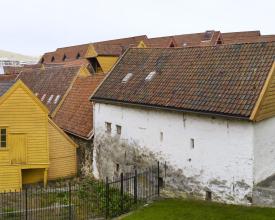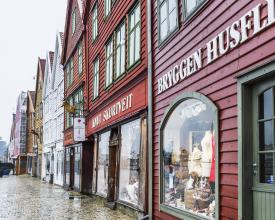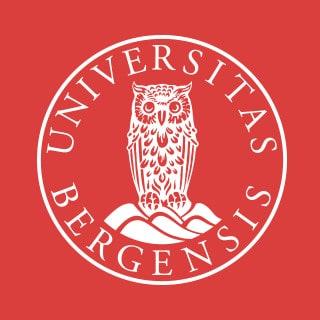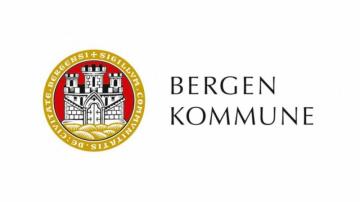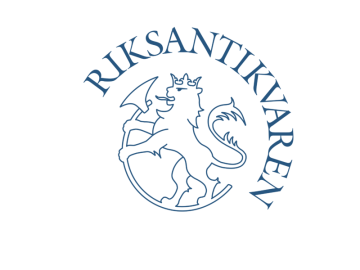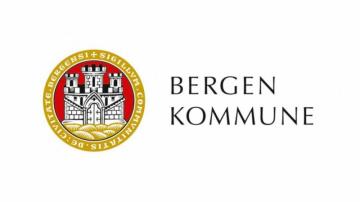
Establishing a shared governance and management structure for World Heritage site of Bryggen, Norway

The World Heritage site of Bryggen, Norway, was inscribed on the Word Heritage (WH) List in 1979 for its characteristic wooden architecture and for its role as one of the oldest large trading ports of Northern Europe. The management of the Bryggen requires coordination with several actors at the national and local level, from national agencies to the local municipality and residents’ groups. Over the years, the management of Bryggen has evolved to include a series of actors and to establish a system of communication between different planning and development instruments. To achieve this, a new management structure including all key stakeholders was established and a new management plan has been prepared and adopted/accepted by local political authorities.
Context
Challenges addressed
Community and people-centred approaches are emphasised in World Heritage management and they are also included in the Operational Guidelines and other processes of the World Heritage Convention as well as in the Norwegian national framework for World Heritage management. However, one of the key challenges is that World Heritage is yet to be fully incorporated in Norwegian national legislation which raises some challenges in the actual involvement of communities and the application of people-centred approaches locally as part of the management of the World Heritage property of Bryggen.
Additionally, the experience of managing Bryggen as a World Heritage site since 1979 has also highlighted the need for more shared and participatory governance arrangements to reflect the wider panorama of actors involved with Bryggen World Heritage property.
Location
Process
Summary of the process
The establishment of a comprehensive management and governance structure for the World Heritage property of Bryggen has required a wider coordination between national, regional and local actors. The new local management structure has clearly defined roles and responsibilities for its three main actors - the WH and the Advisory Board and the WH coordinator - and the further development of management actions will offer a space to better define roles and mandates of different actors and stakeholders.
The management plan offers a connection between the World Heritage Board, the Advisory Board and the political authorities at local and regional level. Stakeholders involved through their participation in the Advisory Board, and the overall revision management plan, providing different types of inputs. Hence, the political acceptance of the management plan allows stakeholders to be involved in defining the framework for heritage management as well as for urban development in the adjacent area to the World heritage property.
Building Blocks
Local World Heritage Management Structure
In 2012 Norway adopted a new national World Heritage policy to push for a more effective implementation of the World Heritage Convention at a national, regional and local level. This includes recommendations for the establishment of local management structures able to enhance local capacities for management.
In 2018, a new structure was approved by all stakeholders and recognized at all levels. It consists of:
- a WH Board responsible for the protection of Bryggen in accordance with WH requirements and the management plan. It consists of 4 political members (2 from Vestland County Council,2 from the Municipality of Bergen) appointed for 4 years.
- an Advisory Board strengthens cooperation between stakeholders in Bryggen with the aim of protecting its OUV and other heritage values. It consists of 10 members representing building owners, museums, university, tourism operators, cultural heritage agencies at local, regional and national level, and friends’ association.
- a full time World Heritage Coordinator funded by the national government and employed at the Agency of Cultural Heritage Management, City of Bergen. It is the contact person for the WH site and responsible for stakeholder involvement and site management.
Enabling factors
There are two main factors that have enabled such a local WH heritage management structure:
- The national policy for World Heritage which establishes local structures and the appointment of a WH coordinator;
- A long, ongoing and thorough process for stakeholder involvement was at the base of creating a structure that was accepted and formally recognized by all actors involved.
Lesson learned
Developing a new structure for a local WH management requires acceptance by all stakeholders, and this needs to evolve and further develop over time. It is very much a learning-by-doing process.
There is not one way of doing things, but it is a process that develops towards identifying the best way of organising management locally. Through the process one also might identify new stakeholders who should be included.
The aim is to coordinate activities, identify how each stakeholder is important for the overall management of World Heritage. However, there is no mandate to instruct either private stakeholders or public management. Hence, it is a continuous process to define the role and mandate of the local World Heritage management structure.
Revision of the Management Plan
The Management Plan is key for the successful management of Bryggen as a WH site. It provides a good understanding of the OUV and other heritage values and it identifies the attributes and provides an overview of potential challenges for the protection of the site.
With the establishment of the new WH management structure, the revision of the management plan by the Advisory Board started in 2018. The WH Coordinator with 4 members of the Advisory Board worked closely in the development of the revised management plan.
Whenever needed, additional contributions from different officers and specialists were included, however the focus was put on keeping the process internal to ensure ownership of the plan by all concerned actors, ensuring that they will contribute to its implementation once adopted. The management plan was adopted by the WH Board in 2020 and the action plan was approved in 2021.
Enabling factors
- Clear definition of how the revision should proceed and which involvement is needed by the Advisory and World Heritage boards was vital,
- WH coordinator played a key role in coordinating all efforts and acts as focal point for all actors involved.
Lesson learned
Preparing and revising a management plan for a WH site is a good opportunity for the local actors tasked with WH management to agree on a shared understanding of the OUV and other heritage values of Bryggen and identify attributes conveying these values
The revision was key in establishing some common management goals and to begin the discussion around potential need for capacity building during this process.
The revision of a management plan is a rather time-consuming process; one therefore needs to be prepared to commit to it with sufficient time and resources. There are often different views on the purpose and aim of the management plan. The preparation of the new plan should involve different stakeholders and the process of management planning offers a space to discuss their different challenges and agendas with an understanding that it may be difficult to embrace all differences.
A management plan is an ongoing process and constantly needs improvement, both on content and on the process itself.
Interaction between planning instruments
Norway does not fully include specific World Heritage provisions in its national legislation, but all WH sites are protected under the existing legal framework. However, a key challenge is to ensure that the management plan for World Heritage is recognized and implemented in all public management and urban development plans affecting or touching upon a WH site.
Following the approval by the WH Board, the Management Plan of Bryggen was approved by the Municipality of Bergen and Vestland County Council. This recognition states that the Management plan should be implemented by all public municipal and county authorities in their actions of maintenance of public infrastructure, new urban developments, use of public spaces, and in management or planning of cultural events. This recognition strengthens cultural heritage management in the municipality and the county and their commitment to uphold a strong focus on the protection of the WH property of Bryggen.
Bryggen WH site only covers a small geographical area within the city centre of Bergen. There are several large ongoing urban planning projects just outside the WH property. The political recognition of the management plan has become a tool for urban planning beyond the WH property.
Enabling factors
The local WH management structure and its management plan have been accepted by both the Bergen Municipality and the County Council. This also gives the opportunity to the World Heritage Board to give its advice and recommendations to the Municipality and the County Council on the matter of protecting Bryggen’s OUV.
Lesson learned
Having a WH property located inside a wider historic city centre means that urban planning decisions have the potential to affect the WH property and its OUV. Political recognition has made it easier to address the protection of the OUV and other heritage values as an integrated part of the wider urban planning process. It has increased the knowledge of WH as well as the importance to involve all concerned stakeholders.
This action aims to provide a framework for an improved and wider inclusion of all different departments involved in urban planning and public management in the next revision of the management plan of Bryggen.
Impacts
The intention of establishing a new management structure focused on achieving stronger involvement of all stakeholders in the management of Bryggen World Heritage site and to directly involve politicians at both local and regional level. The establishment of a management structure and the management plan were a first step in putting in place a larger governance arrangement for the site but it will need more time to evolve and further develop. The process of defining and refining these arrangements is a continuous effort towards defining the role and mandate of World Heritage management at the site. Preparing and revising the management plan was a good opportunity for the local WH actors involved with the management of Bryggen to cooperate towards a achieving a common understanding of the sites heritage values and discuss how its Outstanding Universal Value (OUV) can be maintained and strengthened, offering a common ground to identify improvements with the role and mandate of the local and national WH management structures and processes. The political endorsement of the Management Plan eases the implementation by the municipality and the county. It has become a tool for strengthening a holistic view and management of the property.
Beneficiaries
The beneficiaries are the actors involved in the management of Bryggen as well as the municipality and the county as the Management Plan is politically accepted at local and regional level. Lastly, Bryggen also benefits from these participatory approaches.


